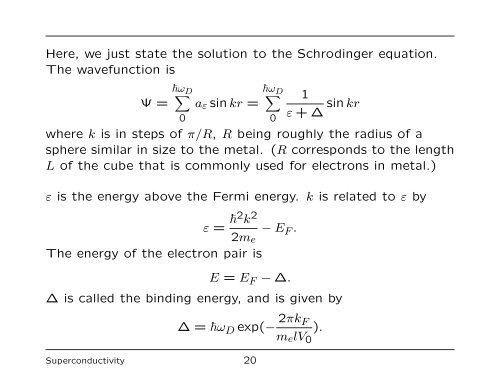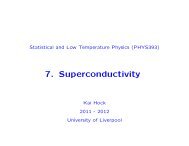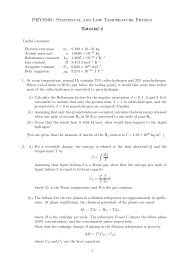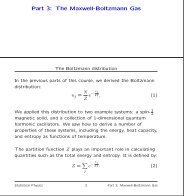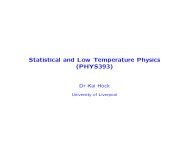The Nature of the Cooper Pair - University of Liverpool
The Nature of the Cooper Pair - University of Liverpool
The Nature of the Cooper Pair - University of Liverpool
You also want an ePaper? Increase the reach of your titles
YUMPU automatically turns print PDFs into web optimized ePapers that Google loves.
Here, we just state <strong>the</strong> solution to <strong>the</strong> Schrodinger equation.<br />
<strong>The</strong> wavefunction is<br />
Ψ =<br />
�ω<br />
�D<br />
0<br />
aε sin kr =<br />
�ω<br />
�D<br />
0<br />
1<br />
ε + ∆<br />
sin kr<br />
where k is in steps <strong>of</strong> π/R, R being roughly <strong>the</strong> radius <strong>of</strong> a<br />
sphere similar in size to <strong>the</strong> metal. (R corresponds to <strong>the</strong> length<br />
L <strong>of</strong> <strong>the</strong> cube that is commonly used for electrons in metal.)<br />
ε is <strong>the</strong> energy above <strong>the</strong> Fermi energy. k is related to ε by<br />
− EF .<br />
2me<br />
<strong>The</strong> energy <strong>of</strong> <strong>the</strong> electron pair is<br />
ε = �2 k 2<br />
E = E F − ∆.<br />
∆ is called <strong>the</strong> binding energy, and is given by<br />
∆ = �ωD exp(− 2πkF ).<br />
melV0<br />
Superconductivity 20


